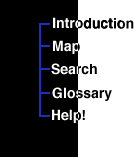

|
 |
Soap molecules: love and hateSoap molecules (also called surfactant (*) molecules) are said to be amphiphilic which means `loving both'. Their crucial characteristic is that they are made of two very different parts : a polar hydrophilic (*) (meaning `water loving') head and one or two long, hydrophobic (*) (meaning `water hating') tails.The polar (*) heads carry a small electrical charge, which makes them soluble in water but not very soluble in oil. The long, uncharged tails are much less soluble in water but more soluble in oil which is also non-polar (*). The molecules are typically about 100nm (*) (10-9m) long. When they are mixed with water such molecules will tend to gather themselves together and form small spherical micelles (*) as shown below.
When arranged as a micelle only the polar hydrophillic heads are in contact with the water, all the hydrophobic tails are shielded from the water. If surfactant molecules are added to an oil/water mixture they will tend to sit at the interface with the hydrophillic heads in the water and the hydrophobic tails in the oil. In this way they can create a layer of molecules, a monolayer (*), as shown below.
The monolayer is just one molecule thick - it has almost no thickness and we can think of it as a 2 dimensional surface, or membrane. So, how does this help us understand why surfactants allow oil and water to mix? Well, the answer is that the surfactant molecules actually go between the water and oil. Imagine putting a little oil inside a big micelle. The hydrophillic heads would still be in water and the hydrophobic tails would now be in oil - everyone is `happy'. It turns out that there are actually a large number of different ways that surfactant, or amphiphile, molecules can be arranged in oil and water mixtures.
|
|
|